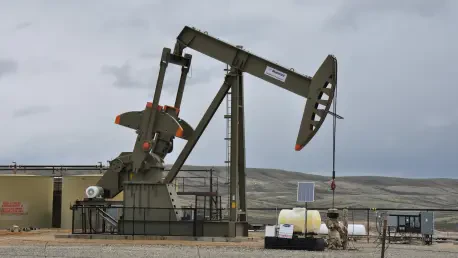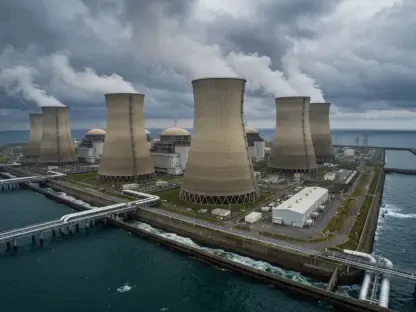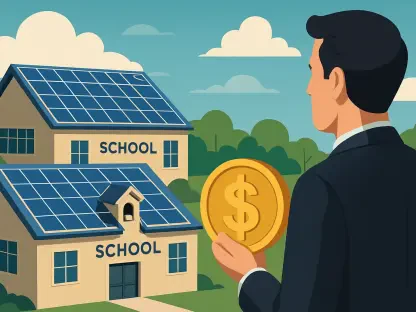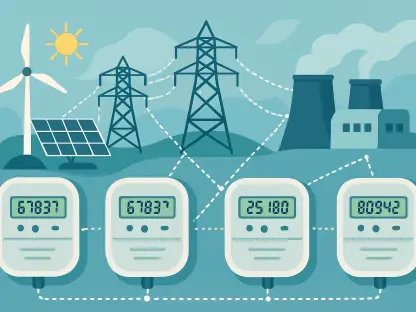Fixed version:
As the world becomes increasingly reliant on electricity to power homes, industries, and transportation, a staggering projection looms on the horizon: energy demand is expected to double by 2050, driven by population growth, economic expansion, and the widespread shift to electric-powered systems. This unprecedented surge poses a monumental challenge for utilities across the United States. Far from being a distant concern, this trend demands immediate action to ensure that the lights stay on and communities remain supported. The stakes are high, as electricity is no longer just a convenience but a fundamental pillar of modern life. Utilities are now at a critical juncture, tasked with balancing reliability, sustainability, and innovation to meet these escalating needs. This pressing issue sparks curiosity about how energy providers are gearing up for such a transformative shift, setting the stage for a deeper exploration of their strategies and commitments.
Addressing the Surge in Electricity Needs
Planning for Unprecedented Growth
The rapid rise in electricity demand is reshaping the landscape for utilities, requiring meticulous planning to keep pace with societal and economic changes. Factors such as the electrification of vehicles, heating systems, and industrial processes are accelerating consumption at a rate not seen in decades. To address this, energy providers are investing heavily in expanding generation capacity and forecasting future needs with precision. Collaborative efforts across the sector are underway to ensure that infrastructure can support both current users and anticipated growth. This involves not only building new facilities but also upgrading existing systems to handle higher loads. The focus remains on creating a robust framework that can adapt to spikes in demand, whether driven by seasonal weather patterns or emerging technologies. By prioritizing strategic resource allocation, utilities aim to prevent disruptions and maintain the seamless delivery of power to homes and businesses alike, ensuring that no community is left in the dark.
Investing in Diverse Energy Solutions
Beyond sheer capacity, the approach to meeting doubled demand hinges on diversifying the energy mix to enhance reliability and sustainability. Utilities are transitioning from older, less efficient plants to a portfolio that includes renewables like wind and solar, alongside natural gas and cutting-edge energy storage systems. This shift is critical, as it reduces environmental impact while providing flexibility to respond to fluctuating needs. Significant investments are being channeled into research and development of innovative technologies that promise greater efficiency. For instance, integrating smart grid systems allows for real-time monitoring and adjustments, optimizing energy distribution. This diversification also serves as a buffer against potential shortages, ensuring that no single source becomes a point of failure. As these solutions are rolled out, the emphasis remains on balancing immediate operational requirements with long-term goals of reducing carbon footprints, creating a more resilient energy ecosystem for future generations.
Modernizing Infrastructure for the Future
Upgrading the Energy Grid for Reliability
A key component of preparing for increased demand lies in modernizing the energy grid to ensure safe and consistent power delivery. Aging infrastructure, much of it designed for a less electrified era, struggles to meet today’s requirements, let alone those projected for the coming decades. Utilities are undertaking extensive projects to enhance transmission lines and distribution networks, making them capable of handling higher volumes of electricity from diverse sources. This modernization also involves integrating digital tools to detect and address issues before they escalate into outages. By strengthening these critical systems, energy providers aim to mitigate risks posed by extreme weather or unexpected surges in usage. The goal is a grid that not only keeps up with current consumption but also anticipates future challenges, providing unwavering service to customers. Such efforts reflect a deep commitment to reliability as a non-negotiable priority in the face of growing complexity.
Fostering Collaboration for Systemic Resilience
Collaboration across the energy sector stands as a cornerstone of building a grid ready for doubled demand. Utilities are partnering with technology firms, regulators, and local governments to align on shared goals of resilience and efficiency. These partnerships facilitate coordinated planning, ensuring that new infrastructure projects complement existing systems and address regional needs. Joint initiatives also focus on expanding access to renewable energy sources, integrating them seamlessly into the broader network. By pooling expertise and resources, stakeholders can tackle large-scale challenges, such as securing funding for major upgrades or navigating regulatory hurdles. This collective approach helps distribute the burden of transformation, making it more feasible to implement sweeping changes. Ultimately, fostering such alliances ensures that the energy system evolves as a unified whole, capable of supporting economic growth and community well-being without faltering under pressure.
Building a Sustainable Energy Legacy
Reflecting on Past Achievements
Looking back, utilities have demonstrated remarkable foresight in navigating past shifts in energy consumption and technology over the decades. Challenges like industrial booms and the rise of digital economies were met with innovative solutions, ensuring that power remained a constant amid change. Investments in cleaner generation methods and grid enhancements laid the groundwork for today’s more dynamic energy landscape. These historical efforts to balance reliability with environmental considerations showed an ability to adapt under pressure. By learning from those experiences, the sector honed strategies that prioritized both immediate service and long-term planning. The commitment to keeping power flowing, regardless of external conditions, became a hallmark of the industry’s legacy. Reflecting on these milestones offers valuable lessons, underscoring that adaptability and dedication were key to overcoming obstacles and meeting society’s evolving needs.
Charting the Path Forward
As the journey ahead unfolds, utilities must continue to act decisively to address the looming doubling of energy demand. Embracing cutting-edge technologies and expanding renewable energy integration will be vital steps in sustaining reliability. Policymakers and industry leaders should prioritize funding for infrastructure upgrades while fostering innovation through incentives for research. Communities can play a role by adopting energy-efficient practices, easing the strain on systems. Looking to the next several years, from now until 2030, the focus should be on accelerating the deployment of smart grids and storage solutions to handle peak loads effectively. Transparency with customers about ongoing efforts and future plans will build trust and encourage collective responsibility. By combining these actionable measures with a steadfast promise to deliver safe, dependable power, the energy sector can turn today’s challenges into tomorrow’s triumphs, ensuring a resilient and sustainable future for all.









